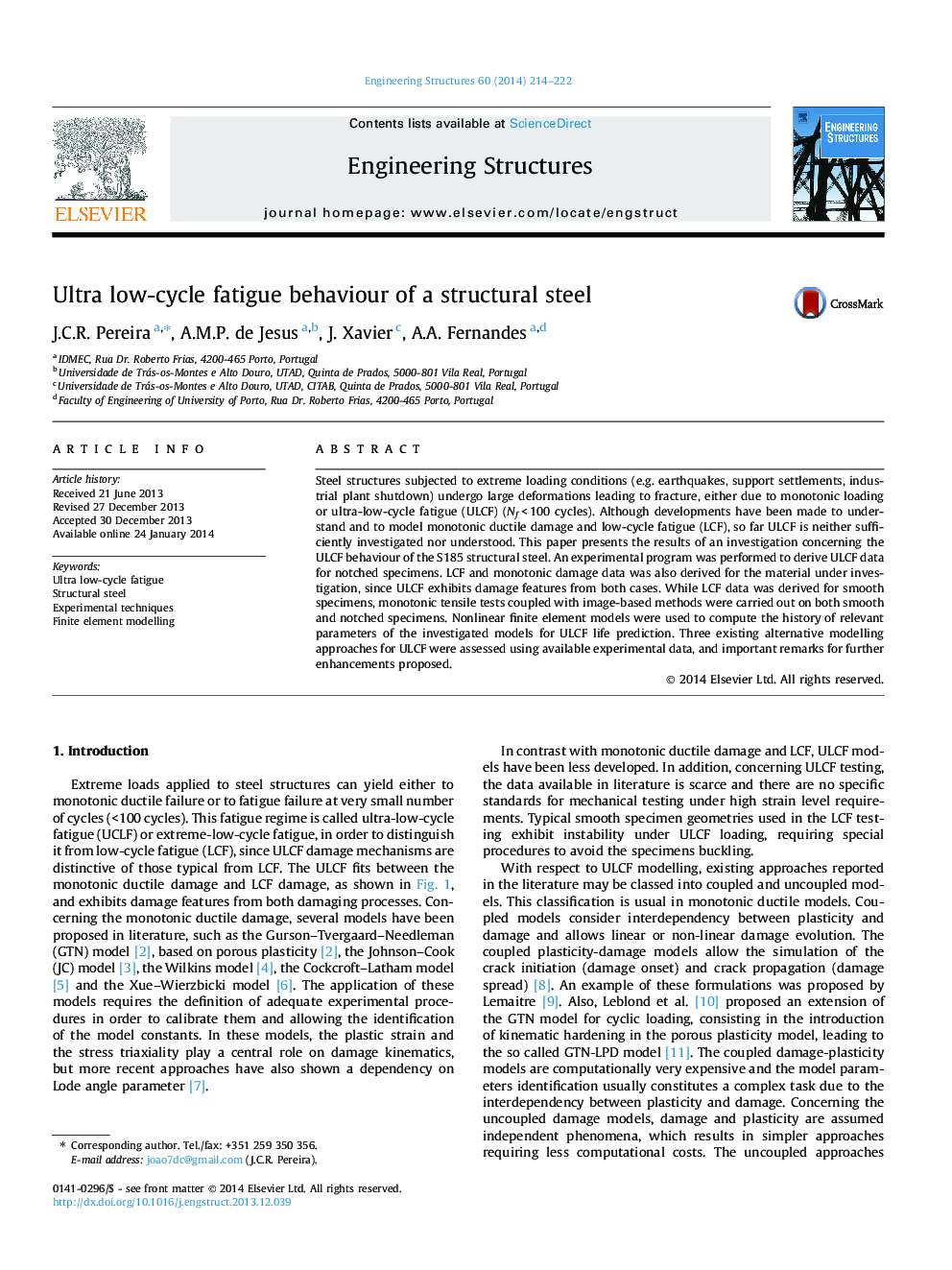| Article ID | Journal | Published Year | Pages | File Type |
|---|---|---|---|---|
| 266867 | Engineering Structures | 2014 | 9 Pages |
•Monotonic, LCF and ULCF behaviour of the S185 steel was investigated.•DIC and features tracking techniques used to allow models calibration.•Coffin–Manson relation produced inconsistency predictions in the ULCF regime.•A new damage function was proposed for the Kanvinde–Deierlein ULCF approach.•Xue approach for ULCF was extended to multiaxial conditions.
Steel structures subjected to extreme loading conditions (e.g. earthquakes, support settlements, industrial plant shutdown) undergo large deformations leading to fracture, either due to monotonic loading or ultra-low-cycle fatigue (ULCF) (Nf < 100 cycles). Although developments have been made to understand and to model monotonic ductile damage and low-cycle fatigue (LCF), so far ULCF is neither sufficiently investigated nor understood. This paper presents the results of an investigation concerning the ULCF behaviour of the S185 structural steel. An experimental program was performed to derive ULCF data for notched specimens. LCF and monotonic damage data was also derived for the material under investigation, since ULCF exhibits damage features from both cases. While LCF data was derived for smooth specimens, monotonic tensile tests coupled with image-based methods were carried out on both smooth and notched specimens. Nonlinear finite element models were used to compute the history of relevant parameters of the investigated models for ULCF life prediction. Three existing alternative modelling approaches for ULCF were assessed using available experimental data, and important remarks for further enhancements proposed.
